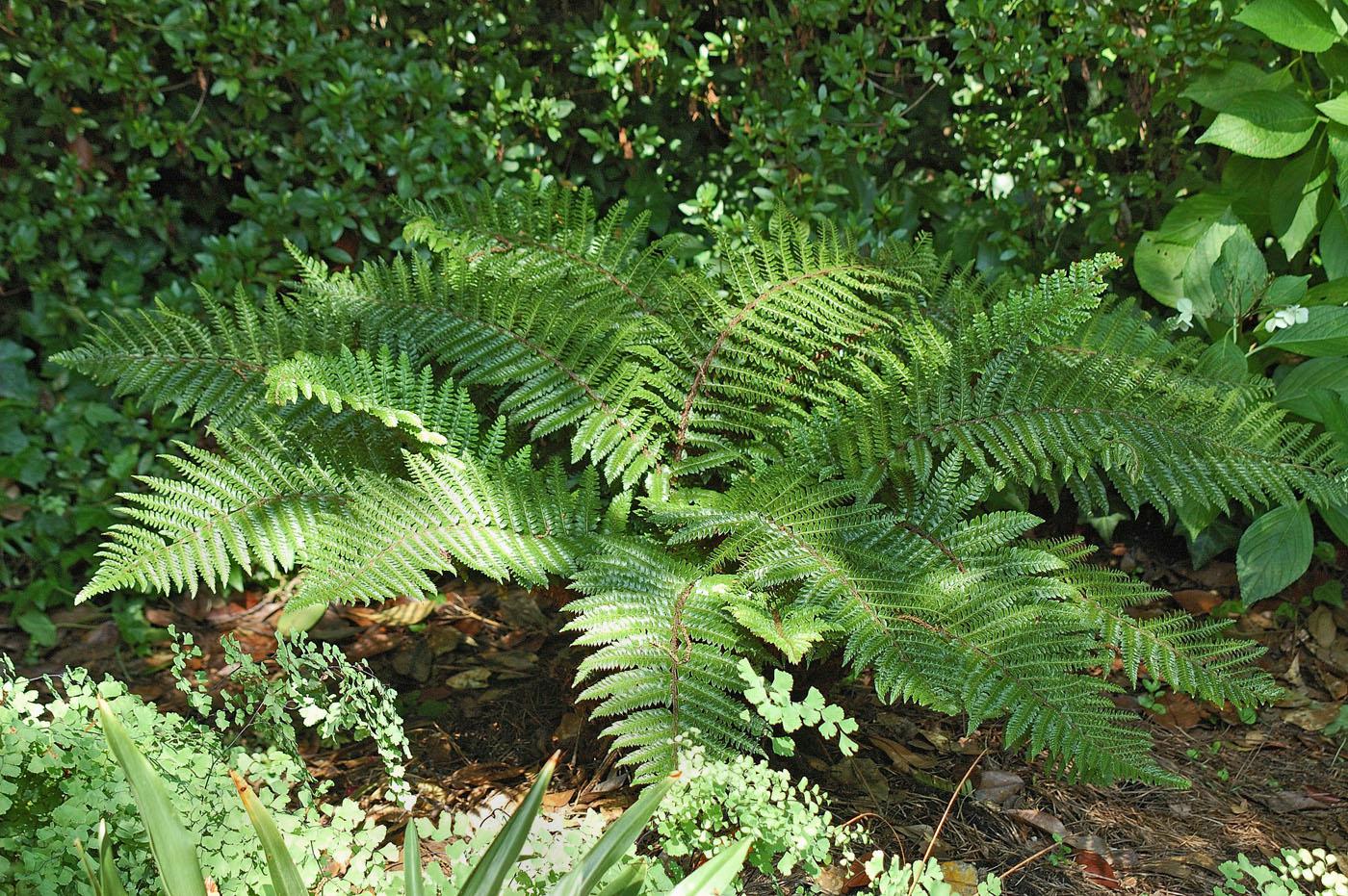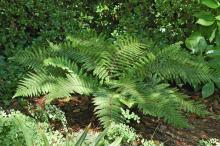Information Possibly Outdated
The information presented on this page was originally released on July 31, 2008. It may not be outdated, but please search our site for more current information. If you plan to quote or reference this information in a publication, please check with the Extension specialist or author before proceeding.
Japanese tassel fern has rare form, beauty
By Norman Winter
MSU Horticulturist
Central Mississippi Research & Extension Center
The Japanese tassel fern offers rare beauty, form and texture in the landscape and should be mandatory for all shade or woodland gardens.
If you treasure ferns but lament their disappearance in the late fall -- caused by deciduous dormancy, death or having to move them to a sheltered location -- then you will like the genus Polystichum.
The Japanese tassel fern is known botanically as Polystichum polyblepharum. Although it presents a spelling challenge, it is simply incredible in the landscape.
I recently had the opportunity to film in a wonderful garden where the Japanese tassel fern was used in a number of locations. It was used once with large rocks and partnered with the autumn fern. In another place it was combined with hostas, and somewhere else it grew with the native Southern Maidenhair fern.
One Web site compares this fern's form to that of a shuttlecock, and others call it vase-shaped. These are certainly correct, but I have a different description. When older, unattractive fronds are kept pruned, an older, 3-foot-wide or wider clump can have a 4- to 5-inch trunk, making it look like a cycad or sago palm. You could even argue it looks like a dwarf tree fern but with much different fronds.
The plant gets its name from the way young fronds, called crosiers, unfurl and bend backward, drooping in a tassel form before flattening out. The evergreen fronds are a shiny, dark green that gives an almost waxy appearance.
The Japanese tassel fern is very adaptable. It is cold hardy to zone 5 and yet can thrive in filtered-light areas in zone 9. Like many ferns, it does need moist, fertile, organic-rich soil that is well drained.
If you think you might have heard the botanical name Polystichum before, you may be right. The Christmas fern is an outstanding, much underused native known as Polystichum acrostichoides.
The evergreen Christmas fern is native across the eastern United States. Some suggest it gets its name because it is green during Christmas, and others say it was prominent in holiday floral arrangements because of its color at Christmas time.
Regardless, you will want it because it has glossy, deep green, upright fronds that reach 18 to 30 inches before arching over. The clumps reach about 2 feet wide. I find it amusing that gardeners will plant Boston ferns and Kimberly Queens in the ground, not knowing that the native Christmas fern would be the far superior choice.
Polystichum is not just for the East Coast. The West Coast has the western sword fern, or Polystichum munitum. This evergreen is cold hardy from zones 3 to 8 and may best be described as magnificent. It can reach 5 feet tall and 4 feet wide, and it is found from California to British Columbia eastward to Montana, Idaho and South Dakota.
Ferns bring the woodland or shade garden to life like few other plants can. They even look right at home in the tropical-style garden. As you visit local garden centers from time to time, keep watch for not only the imported Japanese tassel fern but also some great natives like the Christmas fern and the western sword fern.








